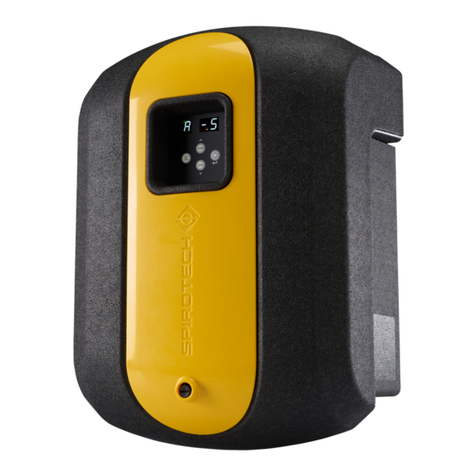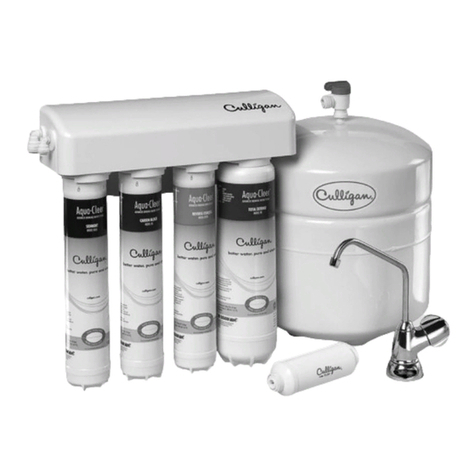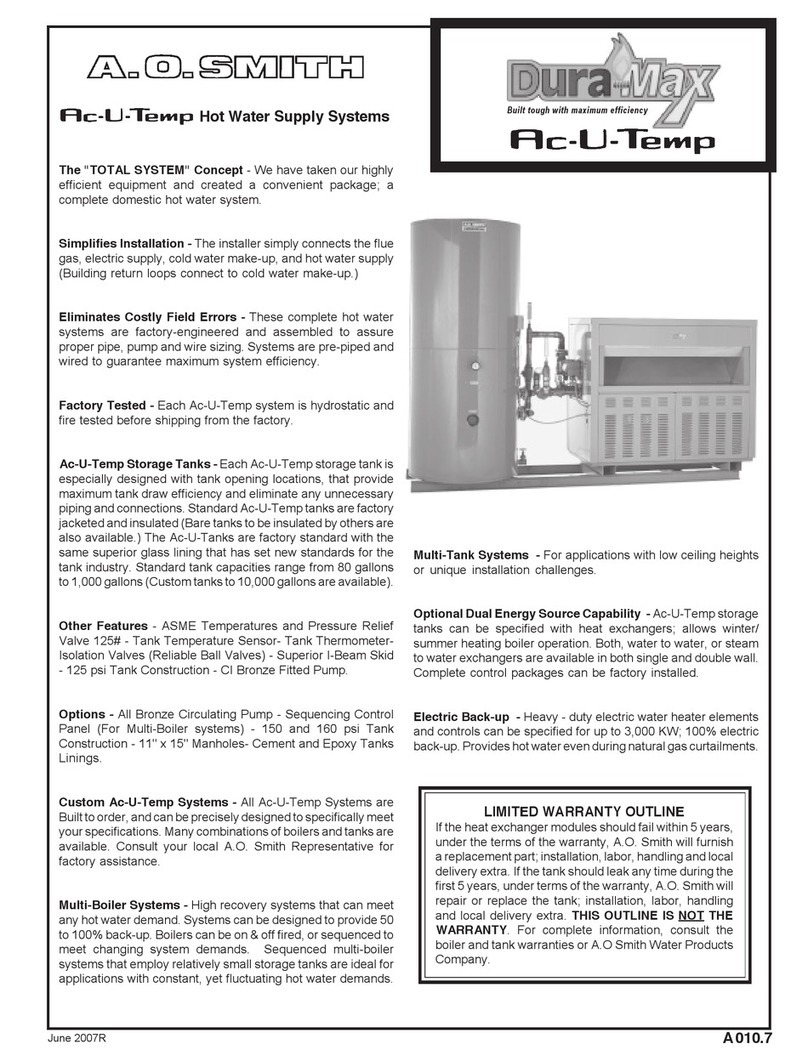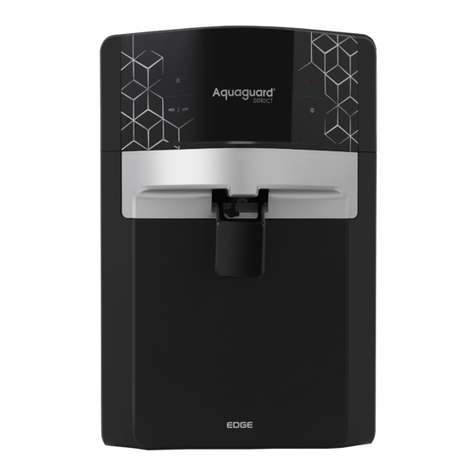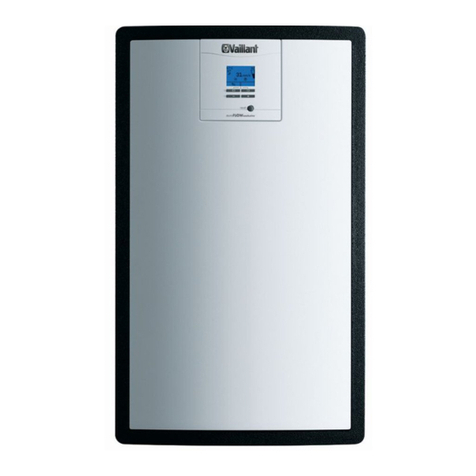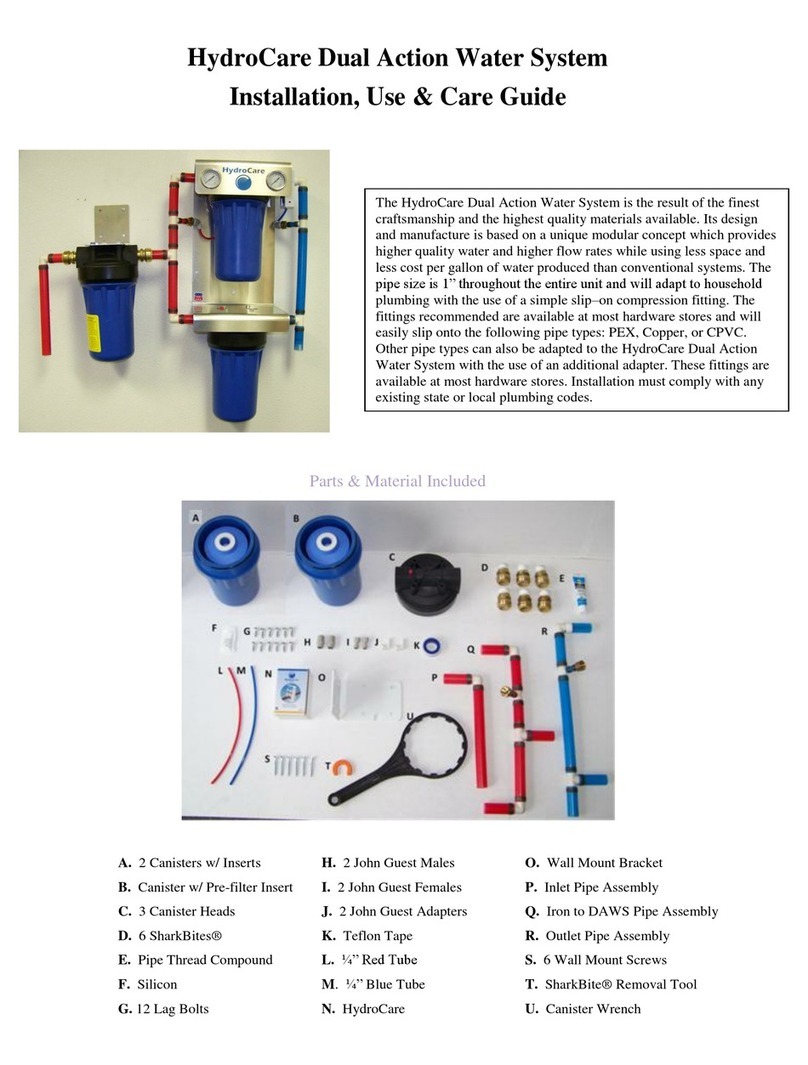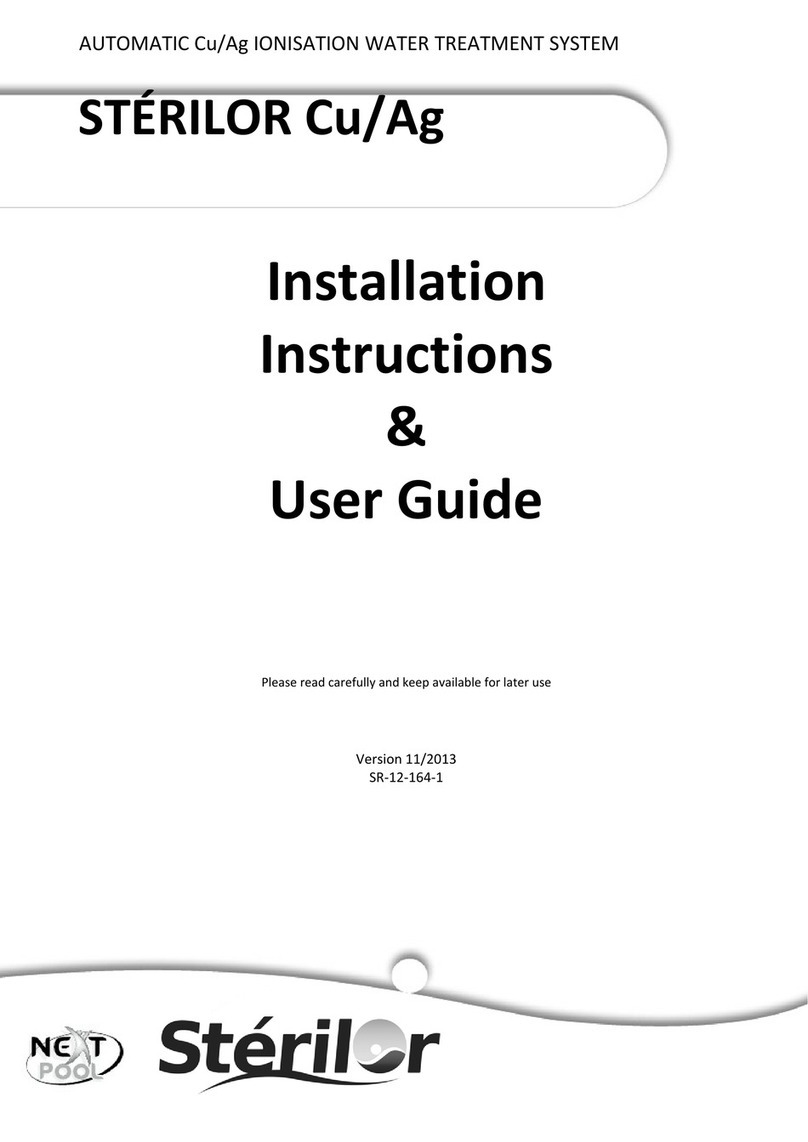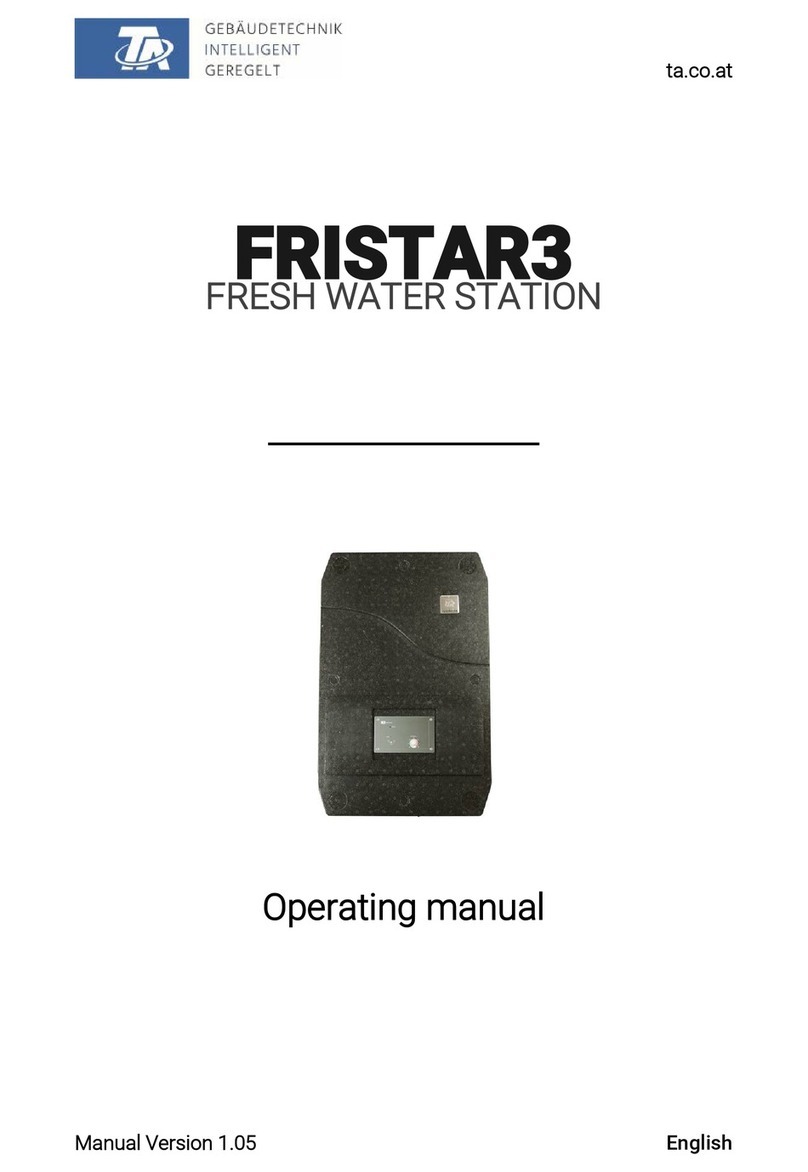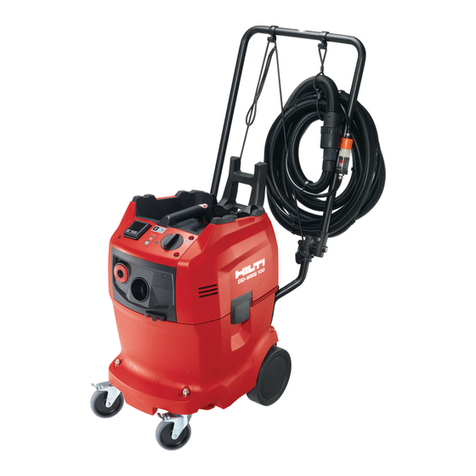8
Flushing / Disinfecting the System
CB Tech recommends that you not allow water to sit in the system for
extended periods of time without use. If a system is left unused for more than
10 days, it may need to be ushed / disinfected before resuming normal use.
1. Remove the lter cartridge by following the directions in Removing the
Old Filter Cartridge (Pg 6).
2. Add 5 to 7 drops of bleach to the bottom half of the system.
3. Reconnect the top half of the housing without a replacement lter
cartridge installed.
4. Turn on the water supply and allow the system to ll up with the water/
bleach solution.
5. Let the water and bleach ush out of the system.
6. Open, clean, and rinse out the inside of the system.
7. Follow the directions in section Installing the New Filter Cartridge (Pg 7).
Warranty
CB Tech Warranty: CB Tech warrants to the original retail customer its DWS and
components to be free of defects in material and workmanship for use under normal
care.
The capacity of the lter cartridge depends upon the amount of impurities in the
water to be processed.
Except as otherwise expressly provided above, CB Tech makes no warranties,
express or implied, arising by law or otherwise, including without limitation the
implied warranties of merchantability and tness for a particular purpose, to any
person. This limited warranted may not be altered, varied, or extended except by
a written instrument executed by CB Tech. The remedy of repair or replacement as
provided under this limited warranty is exclusive. In no event shall CB Tech be liable
for any consequential or incidental damages to any person whether occasioned by
negligence of the manufacturer, including without limitation damages of loss of use,
cost of substitution, property damage, or other monetary loss.
Warranty is valid only if the DWS is operated within conditions listed herein. The
warranty begins from the date of purchase.
